
Review on ASUS (RT-N10+) Wireless-N 150 Entry Home Router with Fast Ethernet and 4 Guest SSID Support (Open Source DDWRT) - Black by Roberto Strumer

Inexpensive router that works well
First, make sure you install the DD-WRT firmware (note that the "B1" hardware version you will most likely receive is NOT the Tomato firmware is working as of April 8, 2011 ). To install the DD-WRT firmware on this router, search the router in the supported DD-WRT database [.]. Two files need to be installed on this router: 1. factory-to-ddwrt.trx 2. asus-rt-n10plus-ddwrt-webflash.bin Using your laptop/PC, assuming Windows OS and DHCP, navigate to with a browser 192.168 .1.1 (username and password = "admin”). Go to Administration and upload the factory-to-ddwrt.trx file. When this is complete, wait about 5 minutes, unplug your router and plug it back in. Go to 192.168.1.1 again with the browser. Change the username and password and click Save. Then go to Administration and download the asus-rt-n10plus-ddwrt-webflash.bin file. When this is complete, wait about 5 minutes, unplug your router and plug it back in. Ready; Just configure the router like you would any other router (visit the DD-WRT website if needed). Note that the firmware is fairly complete and can turn this little router into a thousand-dollar device if desired. In most cases, the default settings plus WiFi security are all you need. Please note that Tomato is currently not supported in version "B1" (another earlier version than B1 is supported). If you tend not to read the stuff like me and try to install Tomato, you will lock up your router like I did. To unlock the router: 1. Change the DHCP network setting to Static and set the IP address to 192.168.1.15 ("15" is crucial, this is the IP address this router expects when flashing the firmware ). Make sure your gateway is set to 192.168.1.12. With the router powered on and an Ethernet cable connected between the router and the laptop/PC, use a paper clip to press the reset button on the router. While holding the reset button, unplug the router from the network - wait 10 seconds - plug it back in and hold the reset button for another 10 seconds until the WPS LED starts blinking (the router is now in recovery mode). Note that if you check this, the router will not accept the ping request at this point.3. If you are using Windows, download TFTP2.exe from [.] (or google and download from somewhere else). Please note that if you are using Windows 7, you need to go to "Control Panel" > "Programs and Features" > "Activate Windows Features" (on the LHS control panel) and enable "TFTP Client".4. Run the downloaded program TFTP2.exe and set Server = 192.168.1.1; leave the password blank; and use the factory-to-ddwrt.trx file to flash the router.5. Wait 5 minutes, then unplug the router and plug it back in.6. Change the network settings back to DHCP (wait about 1 minute before proceeding to the next step).7. Visit 192.168.1.1 again with your browser. Change your username and password and click Save. Then go to Administration and download the asus-rt-n10plus-ddwrt-webflash.bin file. When this is complete, wait about 5 minutes, unplug your router and plug it back in. Your router should now be working properly. Just a note: I have previously used a Linksys WRT54GS router with Tomato (reliable). I bought this Asus wireless router to extend my wireless range and gigabit file transfer speeds (I have a NAS on my network). One thing I noticed with this Asus router is that my web pages render faster than the Linksys router, which was a nice result. Nice little device for the price. As others have pointed out, it's cheaply made. But for the money, you can't beat the value. As for durability, time will tell.
- Very good price
- Unbelievable price
New products
Comments (0)
Top products in 📶 Wifi Routers
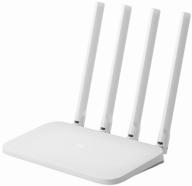
Wi-Fi router Xiaomi Mi Wi-Fi Router 4A Gigabit Edition Global, white

165 Review
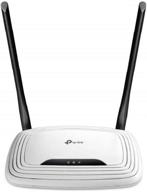
📶 Boost Your Wi-Fi Signal with TP-Link N300 Wireless Extender and Router - 2 High Power Antennas, Access Point, WISP, 300Mbps

216 Review
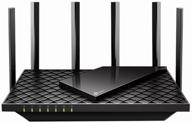
WiFi router TP-LINK Archer AX73, black

120 Review
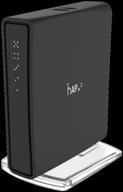
Wi-Fi router MikroTik hAP ac2, black

130 Review
Another interesting products
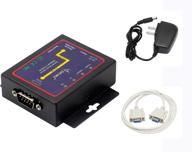
🔌 CERRXIAN RS232 to Ethernet Serial Device Server - TCP/IP Converter with 1Port DB9 RS232 Serial to Ethernet Connectivity

3 Review
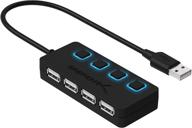
HB-UMLS Sabrent USB 2.0 Hub with 4 Ports and LED Power Switches for Each Port

12 Review
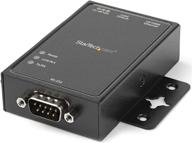
🌐 StarTech.com NETRS2321P: 1-Port RS232 to Ethernet IP Converter, Serial over IP Device Server - Black

5 Review

🔌 uni USB C Hub with Ethernet Adapter, 4K HDMI, Gigabit Ethernet, and 3 USB 3.0 Ports for MacBook Pro, iPad Pro, XPS

11 Review

